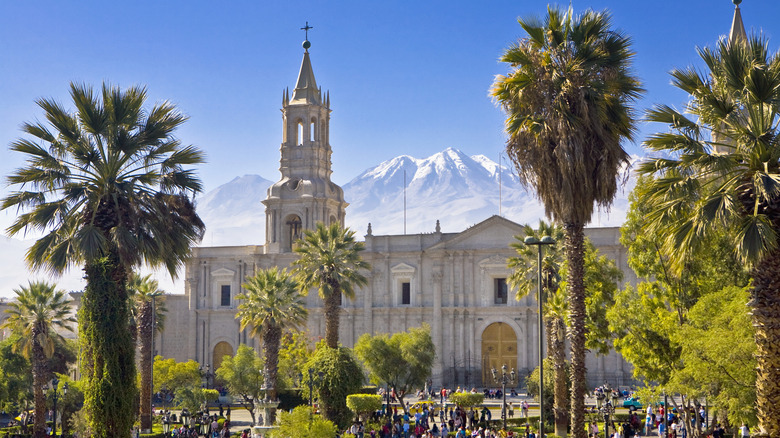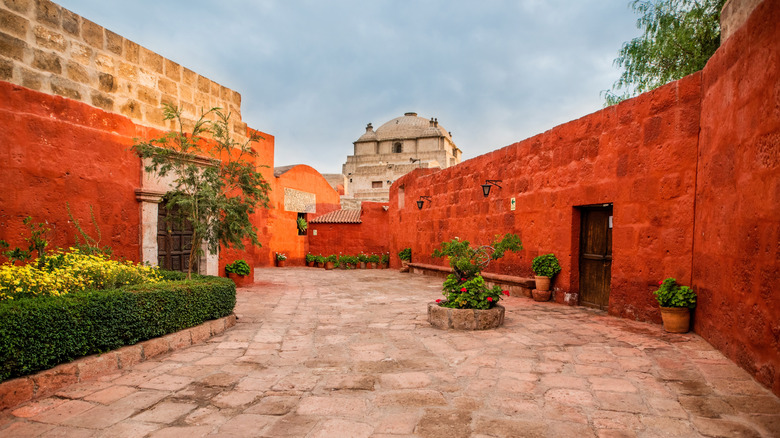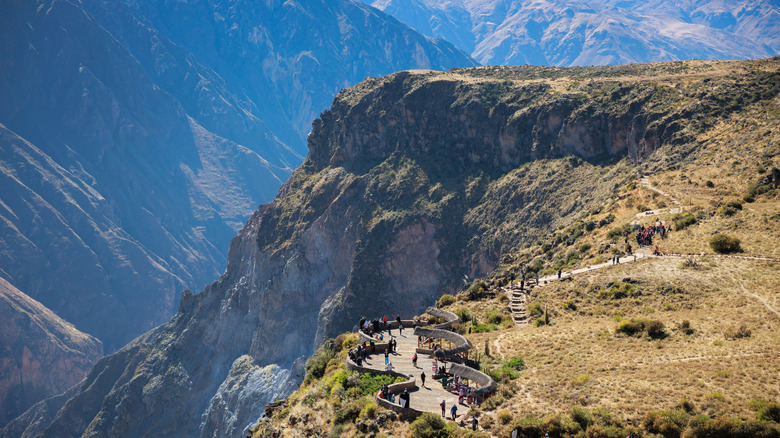An Underrated Culinary Paradise With Majestic Volcanoes Is Known As Peru's 'White City'
Most visitors flock to Peru to see the ruins at Machu Picchu, visit its capital of Lima, or hike through portions of the awe-inspiring Andes mountains. What visitors to this beautiful country don't realize is that there are so many other incredible places to visit! Known as "Cuidad Blanca" or White City due to its strikingly white colonial style buildings made from volcanic sillar stone, Arequipa is just one of South America's most stunning but underrated cities. Nestled below the natural giant of the Misti Volcano, Arequipa is Peru's second-largest city in terms of population.
The name Arequipa is believed to have come from the language of the Aymara indigenous group in reference to the city's proximity to the volcano with "ari" meaning summit and "quipa" meaning lying behind. A separate legend suggests the name came around 1300 A.D. with the arrival of the supreme ruler of the Inca civilization, who said, "Ari, quepay," which means "yes, let us stay" in the Incan language Quechua.
Under Spanish colonial rule beginning in the mid-16th century, the architecture the city is so well known for began to take form, and Arequipa flourished. In 2000, the city center was recognized for its beauty as a UNESCO World Heritage Site. This majestic city, with its blend of natural wonders, historical significance, and stunning cultural impressions is a destination that will leave you wanting more. Whether you spend your day marveling at the incredible architecture, sampling unique dishes that blend the influences of its Spanish and indigenous cultures, or exploring the rugged landscapes, Arequipa should be at the top of everyone's travel bucket list for 2025.
Wander and dine your way through the city
Spend the day wandering the cobblestone streets of Arequipa and admiring the unique architecture. Ironically, even though Arequipa is called the White City, one of its most famous attractions is known for its red and blue architecture. The Monasterio de Santa Catalina is said to be a city within a city, an intricate maze of stunning courtyards, chapels, and cloisters. Take time to get lost in this beautifully painted 20,000-square-meter complex and enjoy the serenity this monastery brings.
Venture from here to the Plaza de Armas, the city's public square where you can interact with the locals. In the northeast corner stands one of the most visited sites in Arequipa, the Basilica Cathedral. Renowned for its incredible size and its stark white coloring from the volcanic rock used to build it, this cathedral is known for its rise from the ashes after being destroyed several times due to natural disasters. You can also visit the Museum of Andean Sanctuaries to learn about one of Arequipa's famous mummified residents, Juanita, the Inca Ice Maiden, and other historical artifacts from the region.
While Peru is one of the world's most underrated countries, according to Gordon Ramsay, and Lima is considered one of the top foodie destinations in South America, Arequipa is also known for its unique gastronomy with bold flavors and ingredients native to the region. Its picanterías are eateries serving up spicy dishes. Items to try include ocopa, a potato served cold and topped with a spicy sauce; rocoto relleno, a spicy stuffed pepper; chupe de camarones, a seafood soup with vegetables; and adobo, meat marinated in vinegar and spices. Another popular culinary choice is cuy, or fried guinea pig.
See the magestic condors at Colca Canyon
No trip to Arequipa would be complete without visiting one of the world's deepest canyons, Colca Canyon. This massive area is twice as deep as the Grand Canyon, at one point cutting into the earth at 13,648 feet. It is also home to the majestic Andean condor, which visitors can see soaring between the canyon walls. The canyon weaves its way through the Andes mountains for about 60 miles, with the Colca River rushing down below.
Visitors have two options for experiencing the canyon, from viewpoints along the rim above or from trails down below. The canyon is dotted with picturesque Peruvian villages such as Maca and Pinchollo, and visitors can see volcanoes, llamas, alpacas, and wild vicuñas along the drive. People can also visit the Uyo Uyo Archaeological Site, an ancient pre-Inca settlement that offers a glimpse into the lives of the area's earliest settlers. After a long day of trekking, visitors can stop off at the hot springs near Chivay to soak in one of the relaxing thermal baths.
Colca Canyon is a 3- to 4-hour drive from Arequipa, and numerous tours are available from the city. While public transport is available, joining a tour will make your trip much smoother. Trekking is an option year-round; however, it is recommended to visit during the dry season from April to October. No matter which time of year you choose to go, just remember to pack your binoculars!


